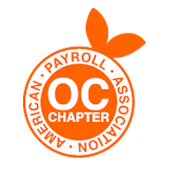401(k), 403(b), 457(b) Pre-Tax Contribution Limit Remains $19,500 for 2021
The IRS has announced the changes to the dollar limits on benefits and contributions under qualified retirement plans, as well as other items, for tax year 2021 [Notice 2020-79, 10-26-20].
IRC §415, which provides for dollar limits on benefits and contributions under qualified retirement plans, also requires that the IRS annually adjust these limits for cost-of-living changes. The IRC also requires various other amounts to be adjusted at the same time and in the same manner as these dollar limits.
- The limitation on the exclusion for elective deferrals under §402(g)(1) (e.g., §401(k) and §403(b) plans) remains unchanged at $19,500.
- The limit on annual additions to defined contribution plans under §415(c)(1)(A) increases to $58,000 (from $57,000).
- The limit on the annual benefit under a defined benefit plan contained in §415(b)(1)(A) remains unchanged at $230,000.
- The annual compensation limit under §401(a)(17), §404(l), §408(k)(3)(C), and §408(k)(6)(D)(ii) increases to $290,000 (from $285,000).
- The compensation amount under §408(p)(2)(E) regarding elective deferrals to SIMPLE retirement accounts remains unchanged at $13,500.
- The limitation under §457(e)(15) concerning elective deferrals to deferred compensation plans of state and local governments and tax-exempt organizations (§457(b) plans) remains unchanged at $19,500.
- The limitation under §416(i)(1)(A)(i) concerning the definition of “key employee” in a top-heavy plan remains unchanged at $185,000.
- The limitation under §414(v)(2)(B)(i) for catch-up contributions to §§401(k), 403(b), and 457(b) plans for individuals age 50 or over remains unchanged at $6,500; the limitation under §414(v)(2)(B)(ii) for catch-up contributions to an employer’s SIMPLE plan for individuals age 50 or over remains unchanged at $3,000.
- The limitation used in the definition of “highly compensated employee” under §414(q)(1)(B) remains unchanged at $130,000.
- The compensation amount under §408(k)(2)(C) regarding simplified employee pensions (SEPs) increases to $650 (from $600).
- The compensation amount under Treas. Reg. §1.61-21(f)(5)(i), concerning the definition of “control employee” for fringe benefit valuation purposes, remains unchanged at $115,000. The compensation amount under §1.61-21(f)(5)(iii) increases to $235,000 (from $230,000).
- The limit on annual contributions to an Individual Retirement Arrangement, remains unchanged at $6,000. The additional catch-up contribution limit for individuals aged 50 and over is not subject to an annual cost-of-living adjustment and remains $1,000.
IRS Announces 2021 COLAs for Transportation Fringes, FSA Deferrals, Foreign Earned Income Exclusion, and More
The IRS has also released inflation-adjusted tables for 2021 reflecting any increases in the FSA deferral limit, foreign earned income exclusion, and excludable transportation fringes, among other changes [Rev. Proc. 2020-45, 10-26-20].
Qualified transportation fringes
The amounts that may be excluded from gross income for employer-provided qualified transportation fringe benefits (transportation in a commuter highway vehicle and any transit pass) and qualified parking for 2021 both remain at $270.
Health flexible spending arrangements
For plan years beginning in 2021, the dollar limitation under IRC §125(i) on voluntary employee salary reductions for contributions to health flexible spending arrangements remains at $2,750. For cafeteria plans that permit the carryover of unused amounts, the maximum carryover amount is $550.
Standard deduction
The standard deduction amounts for 2021 increase to $25,100 for married couples filing jointly or surviving spouses ($24,800 in 2020), $12,550 for single taxpayers and married taxpayers filing separately ($12,400 in 2020), and $18,800 for heads of household ($18,650 in 2020).
Federal tax levies
The Tax Cuts and Jobs Act altered the way the amount of wages, salary, or other income exempt from a federal tax levy is calculated. For taxable years beginning in 2021, the dollar amount used to calculate the amount determined under IRC §6334(d)(4)(B) remains unchanged at $4,300.
Foreign earned income exclusion
For 2021, the maximum foreign earned income exclusion amount under IRC §911(b)(2)(D)(i) is $108,700 (up from $107,600 in 2020). The maximum amount of the foreign housing cost exclusion is $15,218 (up from $15,064 in 2020).
Medical Savings Accounts
To be eligible to make contributions to a Medical Savings Account (or to have the employer make the contributions), an employee must be covered by a high deductible health plan. For 2021, a high deductible health plan is a plan with an annual deductible of $2,400-$3,600 for individual coverage (up from $2,350-$3,550 in 2020) and $4,800-$7,150 for family coverage (up from $4,750-$7,100 in 2020).
Maximum out-of-pocket expenses can be no more than $4,800 for individual coverage (up from $4,750 in 2020) and $8,750 for family coverage (up from $8,650 in 2020).
Long-term care insurance benefits
If a long-term care insurance contract makes per diem benefit payments, the amount of the payments that is excluded from income in 2021 is capped at $400 per day (up from $380 in 2020).
Adoption assistance
For 2021, the maximum amount that can be excluded from an employee’s gross income for qualified adoption expenses under an employer’s adoption assistance program is $14,440 (up from $14,300 in 2020). The maximum amount that can be excluded in connection with the adoption of a child with special needs is $14,440 (up from $14,300 in 2020).
The amount excludable from an employee’s gross income begins to phase out for taxpayers with adjusted gross income of $216,660 (up from $214,520 in 2020) and is completely phased out for taxpayers with adjusted gross income of $256,660 (up from $254,520 in 2020).
Qualified small employer HRA
For 2021, a qualified small employer health reimbursement arrangement (QSEHRA) is an arrangement which, among other requirements, makes payments and reimbursements for qualifying medical care expenses of an eligible employee that do not exceed $5,300 (up from $5,250 for 2020), or $10,700 in the case of an arrangement that also provides for payments or reimbursements for family members of the employee (up from $10,600 for 2020).
Pipeline construction industry per diem option
For 2021, an eligible employer may pay certain welders and heavy equipment mechanics up to $18 per hour for rig-related expenses that will be deemed substantiated under an accountable plan (unchanged from 2020) and up to $11 per hour for fuel (unchanged from 2020), when paid in accordance with Rev. Proc. 2002-41 (2002-23 IRB 1098).
Courtesy of the APA








